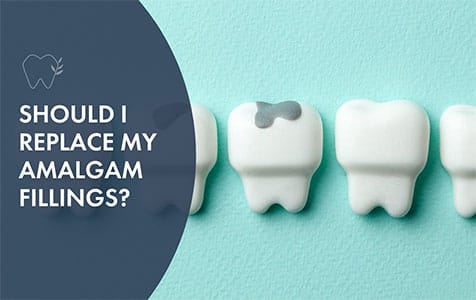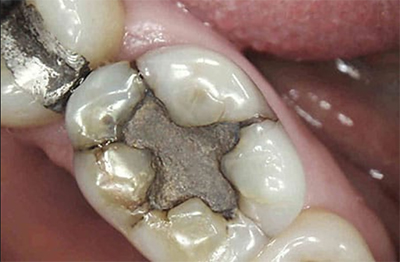
Historically, these metal amalgam fillings were the only filling material available.
However, they have now fallen out of favor due to their esthetics and chemical makeup.

What is an amalgam filling?
Amalgam is a dental alloy composed of powdered silver, tin, and copper mixed with small liquid mercury. When the powders and mercury are mixed , they react to form a very durable metal compound that has been used for many decades to fill cavities in teeth.
They are very wear-resistant and can survive in the mouth for a very long time.
Why should I replace an amalgam filling?
⇝ Reduce allergic reactions
⇝ Reduce exposure to mercury
⇝ Improve esthetics
⇝ Strengthen your teeth
⇝ Prevent microfractures in teeth over time.
How is an amalgam filling replaced?
doctor will remove the filling by carefully cutting it into small pieces, which will then essentially “fall out” of the tooth. This method minimizes trauma to the tooth and ensures that the removal is minimally invasive.

Restoration of a tooth that previously had an amalgam filling most commonly involves three choices: a bonded white filling, a ceramic or metal onlay, or a crown. A white filling may help strengthen a weakened tooth through its nature, bonding the walls of the tooth back together. This type of repair is most successful when replacing only a small amount of tooth structure.
On the other hand, a crown or onlay may be a longer-lasting solution due to their increased strength and the fact that they usually cover and entirely protect the weakened tooth inside them. In this way, they act as a protective shield over the tooth. As a result, these repairs tend to last longer and are best suited for replacing more extensive restorations.















